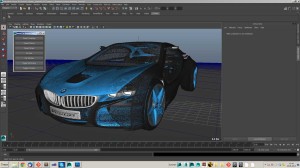 Montreal-based Fabric Software announced the launch of version 1.12 of Fabric Engine – a platform designed to help visual effects and games facilities easily develop their own GPU-accelerated code and build high performance custom tools. The new version includes a new character tools API, as well as Splice Drawing – a customizable integrated real-time renderer.
Montreal-based Fabric Software announced the launch of version 1.12 of Fabric Engine – a platform designed to help visual effects and games facilities easily develop their own GPU-accelerated code and build high performance custom tools. The new version includes a new character tools API, as well as Splice Drawing – a customizable integrated real-time renderer.
“With this release, we offer artists, TDs and R&D teams a huge step forward with GPU compute at zero cost, real-time rendering within their familiar DCC application, plus a host of character tools,” explained Paul Doyle, Fabric Software CEO.
Using the graphics card’s GPU for computation can be extremely efficient, but usually requires specialized programming expertise and explicit coding for target hardware. Fabric Engine enables TDs, as well as R&D engineers, to write code that can execute on both the GPU and the CPU with no additional coding required. It is then simply a matter of testing to see where it runs fastest.
Splice Rendering is a highly customizable real-time renderer that comes as part of the Fabric Engine integration with Autodesk’s Maya and Softimage, offering big performance gains over rendering within the host application alone. Combined with Fabric’s work on the GPU, this means it is now possible to have multiple complex characters running at real-time directly within the regular DCC application.
The new version also includes a character API with core building blocks for constructing high level character tools, including crowd simulation, scene assembly and real-time pre-visualization. It supports FBX and proprietary-format characters, plus integration with Splice Drawing for real-time rendering.





